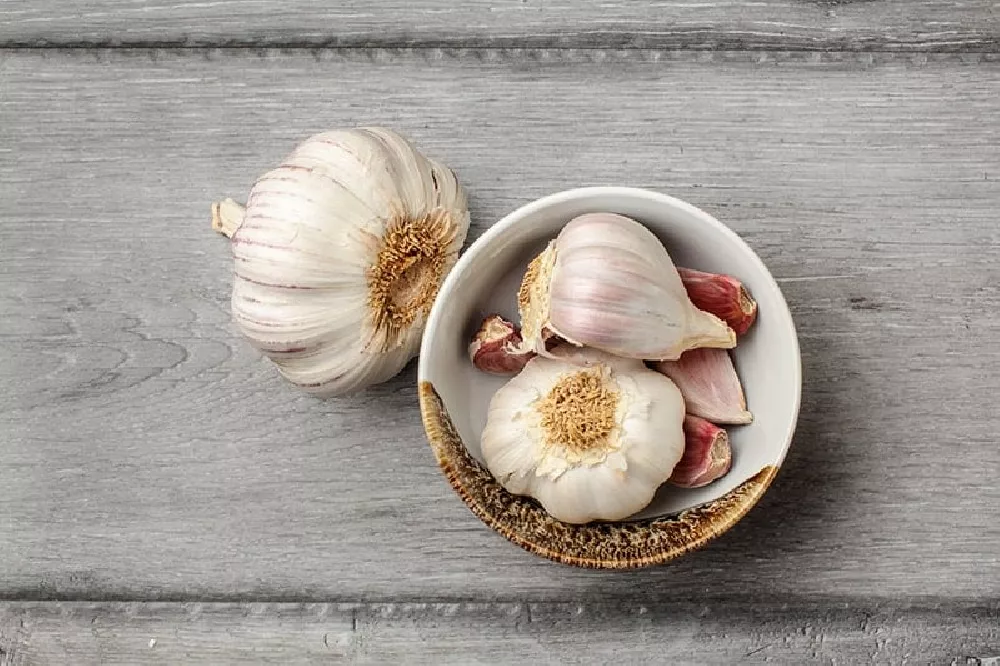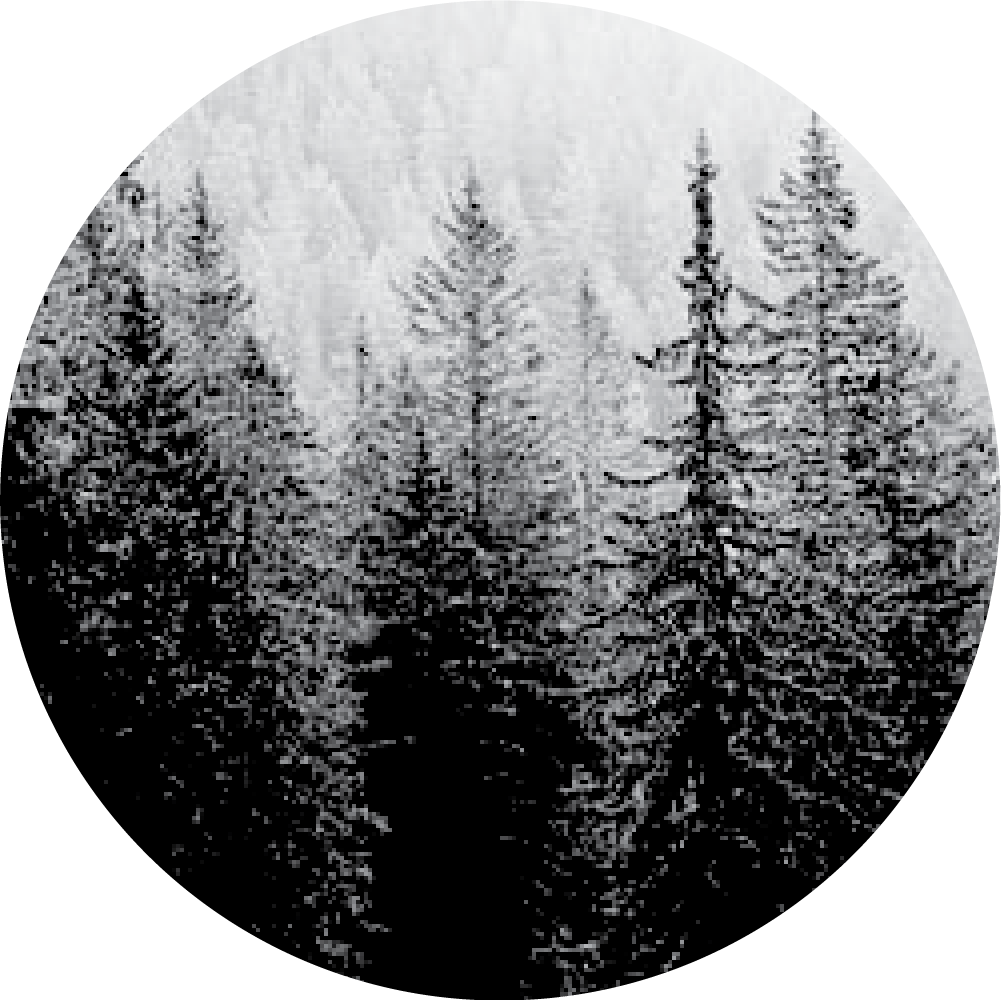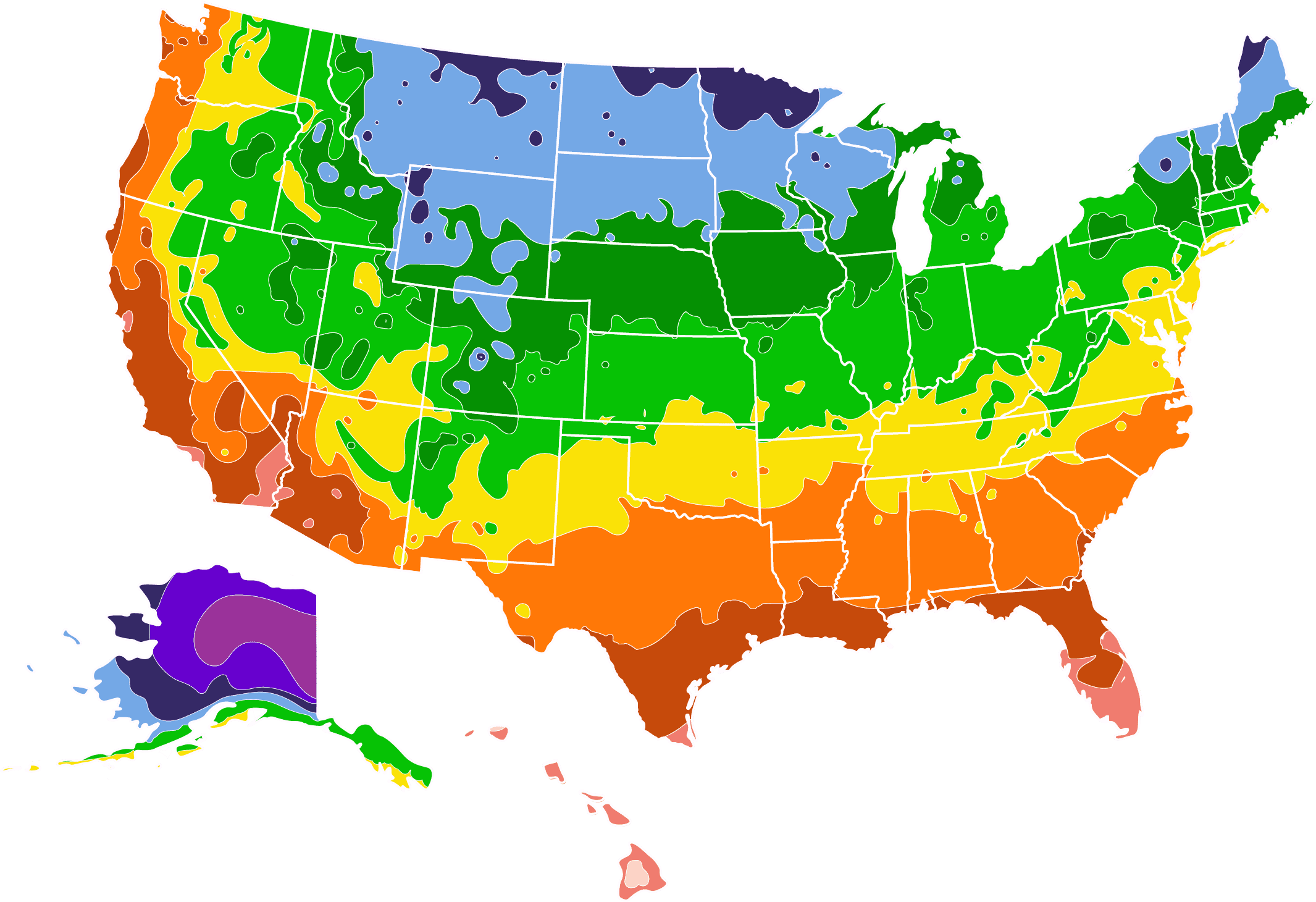Garlic Plants for Sale - Buying & Growing Guide
Garlic is a bulbous perennial that belongs to the onion family. The bulbs are very flavorsome and are a common ingredient in cooking. They are easy plants to grow at home, requiring little maintenance and being adaptable to a wide variety of climates.
There are hundreds of varieties of garlic, but they can all be categorized into two main groups; hardneck and softneck. From here, these groups can further be broken down into eleven types of garlic. Though these types may be different colors and have slightly varying flavors, genetically, they are all almost identical.
Hardneck Garlic (Allium sativum subspecies ophioscorodon)
Hardneck garlic is considered to be the original type of cooking garlic that evolved from wild garlic. It reliably produces larger cloves, though each garlic bulb will have fewer clothes compared to a softneck type, usually less than ten and as few as two. Hardneck varieties of garlic can be identified by their woody, stiff stalk.
When you buy hardneck garlic in the grocery store, it will often have an inch or so of central woody stem still attached. When growing, this stalk sends out curled green scapes, which are slender extensions of the stalk. If you grow a hardneck garlic plant, you should cut these off so that the plant can use its energy to grow larger bulbs; however, the scapes do not need to be wasted and can be used in cooking themselves to add flavor to dishes. Hardneck garlic comes in a wider variety of colors than softneck garlic. It is hardier and is typically grown in cold climates, though it takes longer to mature. These types of garlic have an intense flavor and are the easiest to peel.
Types of Hardneck Garlic
1. Asiatic Hardneck
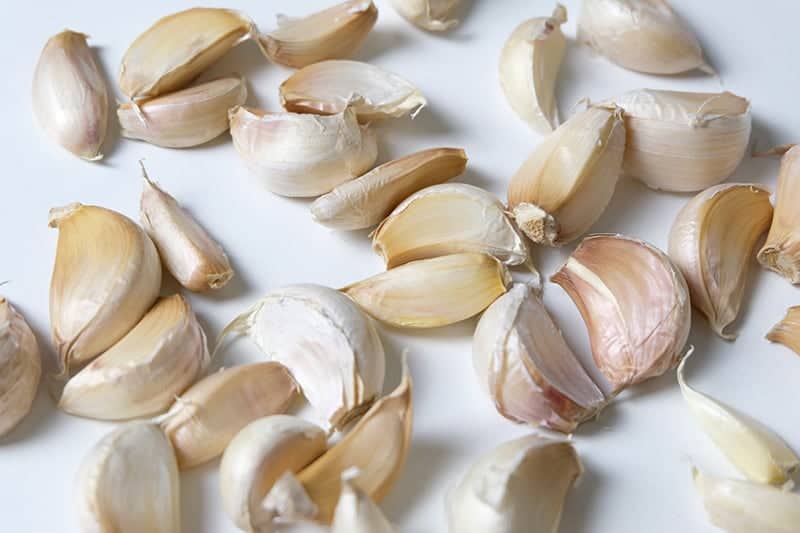
Scientific Name: Allium sativum subspecies ophioscorodon
Mature Size: Up to 4 feet
USDA Hardiness Zone: 2-8
Light: Full sun to partial shade
Water: Average moisture needs
Soil: Well-draining, fertile, loamy
Cultivars and Varieties: Asian Tempest, Pyongyang
Many Asiatic types of garlic originally come from Korea. They produce medium-sized bulbs with between four and eight cloves in each bulb. They vary in flavor between varieties, from sweet to hot and spicy. They are commonly used in Asian cooking to add a depth of flavor and heat. These types of garlic are known to store very well for hardneck, with a shelf life of between five and six months. Cloves of Asiatic garlic are usually vibrantly colored, such as the ‘Asian Tempest’ that is a striking dark purple color. The plants have broad leaves, and tall, wrinkled scapes.
2. Creole Hardneck
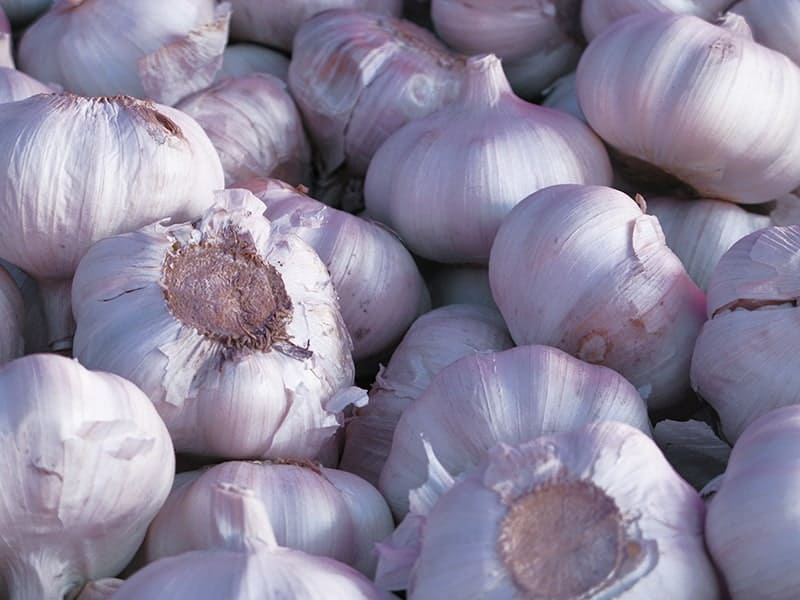
Scientific Name: Allium sativum subspecies ophioscorodon
Mature Size: Up to 6 feet tall
USDA Hardiness Zone: 4-10
Light: Full sun to partial shade
Water: Average moisture needs
Soil: Well-draining, fertile, loamy
Cultivars and Varieties: Burgundy, Creole Red
These types of garlic, unusually for hardnecks, are better suited to warmer climates. They are widely grown in the southern United States and do not fare well in colder northern climates. They produce small to medium-sized bulbs with between eight and twelve cloves per bulb. Creole garlic is currently very popular in gourmet cuisine. It has a delicate nutty flavor and gives a hit of sharp heat that quickly fades on the tongue to leave an agreeable aftertaste. The cloves of this garlic come in striking shades of red and purple.
3. Glazed Purple Stripe Hardneck
Scientific Name: Allium sativum subspecies ophioscorodon
Mature Size: Up to 5 feet tall
USDA Hardiness Zone: 2-8
Light: Full sun to partial shade
Water: Average moisture needs
Soil: Well-draining, fertile, loamy
Cultivars and Varieties: Red Rezan, Vekak
These types of garlic are native to Eastern Europe. They are aptly named for the exterior of the cloves that is glossy and dazzling like a large gem. They are red-purple and striped with flashings of silver. Their taste, however, is not as gleaming as their looks would have you believe. They have a mild flavor that adds a gentle heat to dishes. These bulbs have a shelf life of between five and seven months, and each bulb typically has between six and twelve cloves.
4. Marbled Purple Stripe Hardneck
Scientific Name: Allium sativum subspecies ophioscorodon
Mature Size: Up to 5 feet tall
USDA Hardiness Zone: 2-10
Light: Full sun to partial shade
Water: Average moisture needs
Soil: Well-draining, fertile, loamy
Cultivars and Varieties: Siberian, Metechi
These bulbs are native to Russia and Eastern Europe, and they adapt well to a range of climate conditions. They have a strong flavor, with bulbs that typically contain between four and eight cloves. The cloves are especially decorative, in striped shades of red and cream, with a smooth and shiny surface. The papery sheaths appear to be marbled in purple, hence the name of this type of garlic. These store well, for up to seven months, and are known for being the best type of hardneck garlic to use for creating baked garlic.
5. Middle Eastern Hardneck
Scientific Name: Allium sativum subspecies ophioscorodon
Mature Size: Up to 3 feet tall
USDA Hardiness Zone: 4-10
Light: Full sun to partial shade
Water: Average moisture needs
Soil: Well-draining, fertile, loamy
Cultivars and Varieties: Syrian, Jomah
As the name suggests, these types of garlic hail from the Middle East, and they prefer warm growing conditions. The plants have narrow leaves and grow to a medium height for a garlic plant. The bulbs can range in size and often have a bumpy texture.
6. Porcelain Hardneck
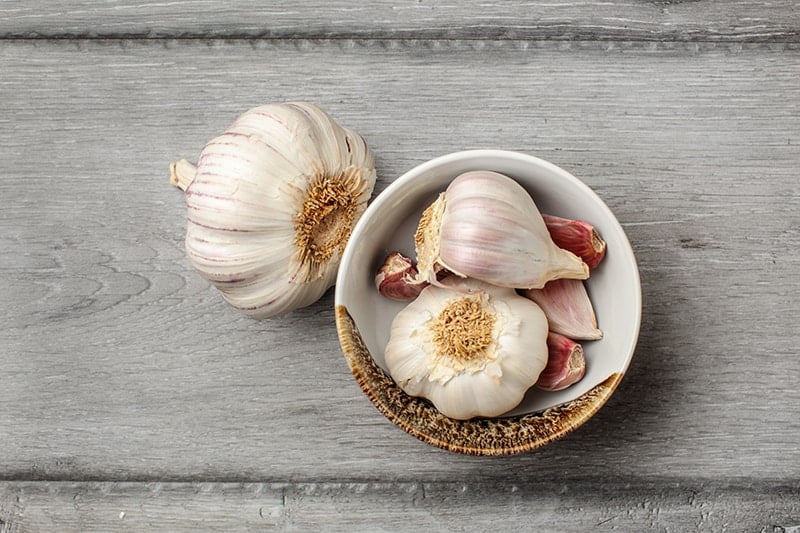
Scientific Name: Allium sativum subspecies ophioscorodon
Mature Size: Up to 6 feet tall
USDA Hardiness Zone: 2-8
Light: Full sun to partial shade
Water: Average moisture needs
Soil: Well-draining, fertile, loamy
Cultivars and Varieties: Polish Hardneck, German White, Georgian Crystal, Romanian Red
These plants produce very large bulbs of garlic that have between two and six cloves. They have a moderate to strong intensity of flavor and have the traditional garlicky taste that most people expect of garlic. They work well in cooking and are one of the more popular types of hardneck garlic. The skin of this garlic is smooth and thick, sometimes with purple markings. It has a paper-like texture and shimmers in the light. This garlic keeps well, with a shelf life of up to eight months.
7. Purple Stripe Hardneck
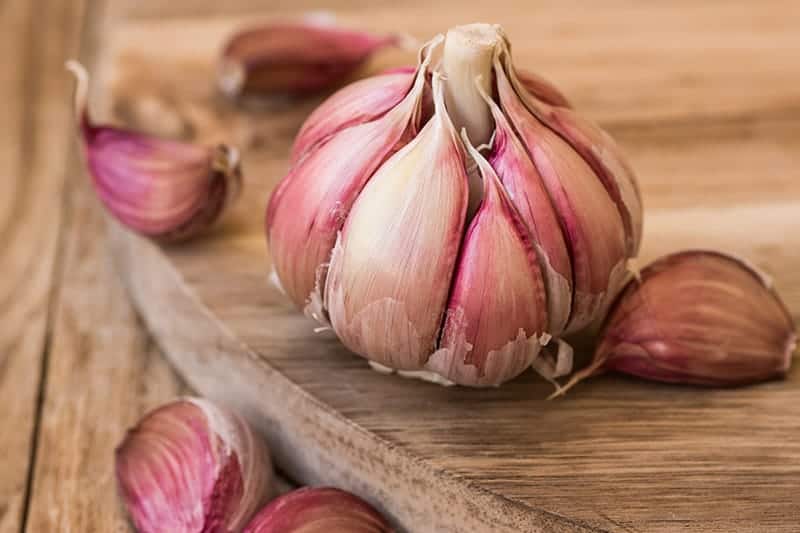
Scientific Name: Allium sativum subspecies ophioscorodon
Mature Size: Up to 5 feet tall
USDA Hardiness Zone: 2-8
Light: Full sun to partial shade
Water: Average moisture needs
Soil: Well-draining, fertile, loamy
Cultivars and Varieties: Chesnok Red, Shatili
This type of garlic comes from the Republic of Georgia. It has a rich quality of flavor without being too strong and becomes especially sweet when baked. In fact, this type of garlic is sometimes used to make garlic ice cream because it is known for its sweetness. The plant grows to between three and five feet, with slender, upright foliage. The bulbs are streaked with purple stripes and contain tan-colored cloves that can range in number from eight to sixteen per bulb.
8. Rocambole Hardneck
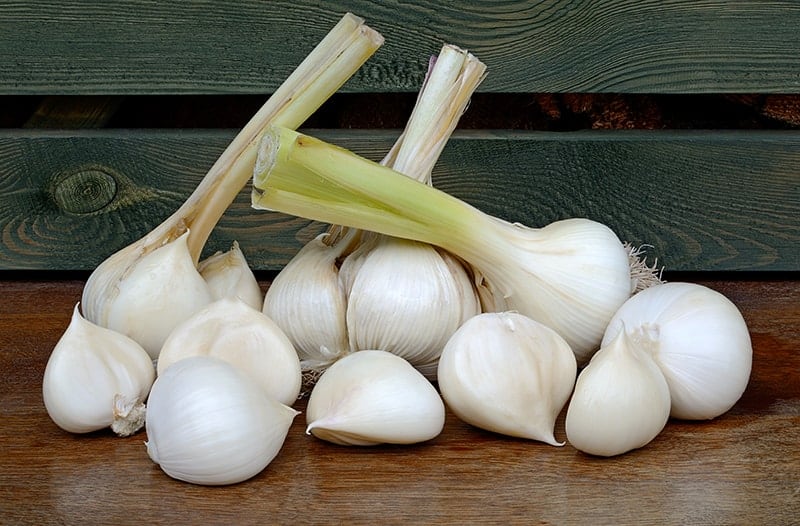
Scientific Name: Allium sativum subspecies ophioscorodon
Mature Size:
USDA Hardiness Zone: 2-8
Light: Full sun to partial shade
Water: Average moisture needs
Soil: Well-draining, fertile, loamy
Cultivars and Varieties: Spanish Roja, Russian Red, German Mountain, Phillips
This type of garlic is one of the most popular hardneck types for growing at home. It has a strong, full-bodied flavor, with loose sheaths that make them a breeze to peel. It is considered by some to be the best-flavored garlic, but it can be challenging to grow as they require very cold winters. The cloves of this garlic are tan or red-colored, with a hard skin, and the bulbs will only store for a maximum of six months. The plants of this type of garlic produce unusual scapes that curl over twice in a double loop.
9. Turban Hardneck
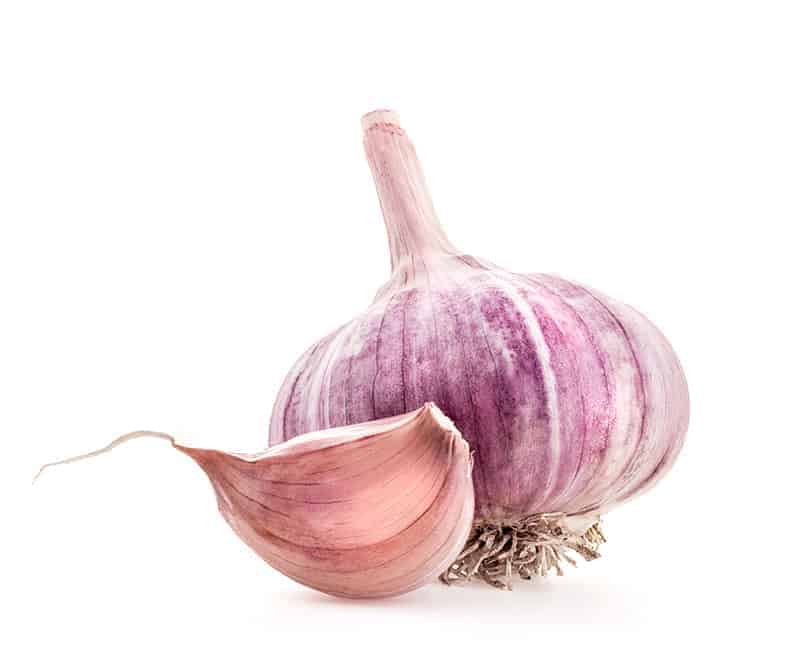
Scientific Name: Allium sativum subspecies ophioscorodon
Mature Size: Up to 3 feet tall
USDA Hardiness Zone: 2-10
Light: Full sun to partial shade
Water: Average moisture needs
Soil: Well-draining, fertile, loamy
Cultivars and Varieties: Chinese Purple, Shandong, Tzan
These types of garlic are less common than others, and come from various areas around the world, including Mexico, and Eastern Europe. They are named after the top of their stalk, which forms the shape of a turban. This garlic has an unusual flavor that is not garlicky at all. They can be very hot and fiery or mild and add a distinctive flavor to dishes. The plants of these garlic bulbs tend to be quite short, with broad, drooping leaves. The bulbs are slightly flattened, with lightly purple striped wrapping, and contain chunky cloves. Cloves are tan-colored and can fill the bulb with between six and twelve evenly-sized cloves. These types of garlic do not keep well and have a short shelf life.
Softneck Garlic (Allium sativum subspecies sativum)
Softneck garlic was developed from hardneck garlic. This is the type of garlic you are most likely to see at the grocery store, predominantly because it matures much faster than hardneck garlic, and so it is ideal for commercial production purposes. It is also more adaptable to a variety of climates than hardneck garlic, it produces more garlic bulbs per plant, and it doesn’t require the maintenance of hardneck garlic as there are no scapes to be pruned off.
Softneck garlic tends to have more cloves than hardneck garlic, but they will each be of a smaller size. It is usually more difficult to peel than hardneck garlic and has a more spicy flavor. Softneck garlic comes in its natural papery wrapping that is multilayered and creamy in color. It has the texture of parchment and continues up to the neck, where it becomes a pliable stalk. The benefit of these layers is that they help to preserve the inner bulb, giving the garlic a shelf life of up to eight months. These stalks are often braided in stores, and provide a decorative way to display garlic, which also makes it easy to grab and pull off. By contrast, hardneck garlic stems are too stiff and cannot be braided.
Types of Softneck Garlic
10. Artichoke Softneck
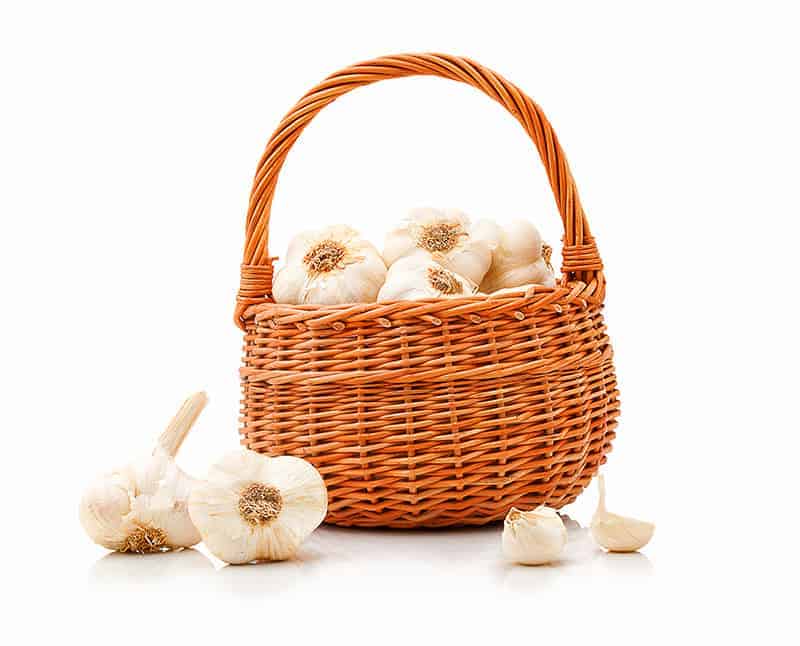
Scientific Name: Allium sativum subspecies sativum
Mature Size: Up to 2 feet tall
USDA Hardiness Zone: 4-10
Light: Full sun to partial shade
Water: Average moisture needs
Soil: Well-draining, fertile, loamy
Cultivars and Varieties: Early Red Italian, California Early, Inchelium Red, Red Toch
These types of garlic produce bulbs that are larger and have fewer cloves than silverskin garlic, the other type of softneck garlic. The number of cloves in each bulb can range from 12 to 25, and they appear in a non-symmetrical pattern. These garlic plants mature early in the growing season and can adapt to a wide range of growing climates and soil conditions, making them popular with both home growers and commercial garlic producers. The bulbs tend to have a flattened shape, and the sheaths can have light purple markings. These bulbs store exceptionally well, lasting for up to ten months.
11. Silverskin Softneck
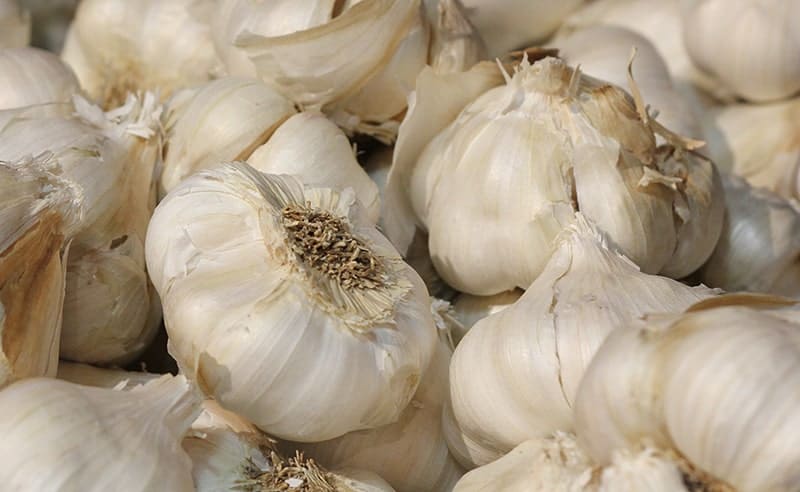
Scientific Name: Allium sativum subspecies sativum
Mature Size: Up to 2 feet tall
USDA Hardiness Zone: 4-10
Light: Full sun to partial shade
Water: Average moisture needs
Soil: Well-draining, fertile, loamy
Cultivars and Varieties: Kettle River Giant, Polish White, Idaho Silver
These types of garlic mature later than artichoke garlic. They have a rather plain and dull exterior and are filled with small cloves in up to five layers. There can be anywhere from 8 to 40 cloves in each bulb. They tend to be hard to peel and come in irregular sizes. Cloves are usually white and take the shape of a teardrop. These types of garlic are the kind that you would ordinarily see braided on display in a grocery store or at the farmers market. They have a strong flavor and have the longest shelf life of all types of garlic, with the ability to be stored for up to twelve months.
